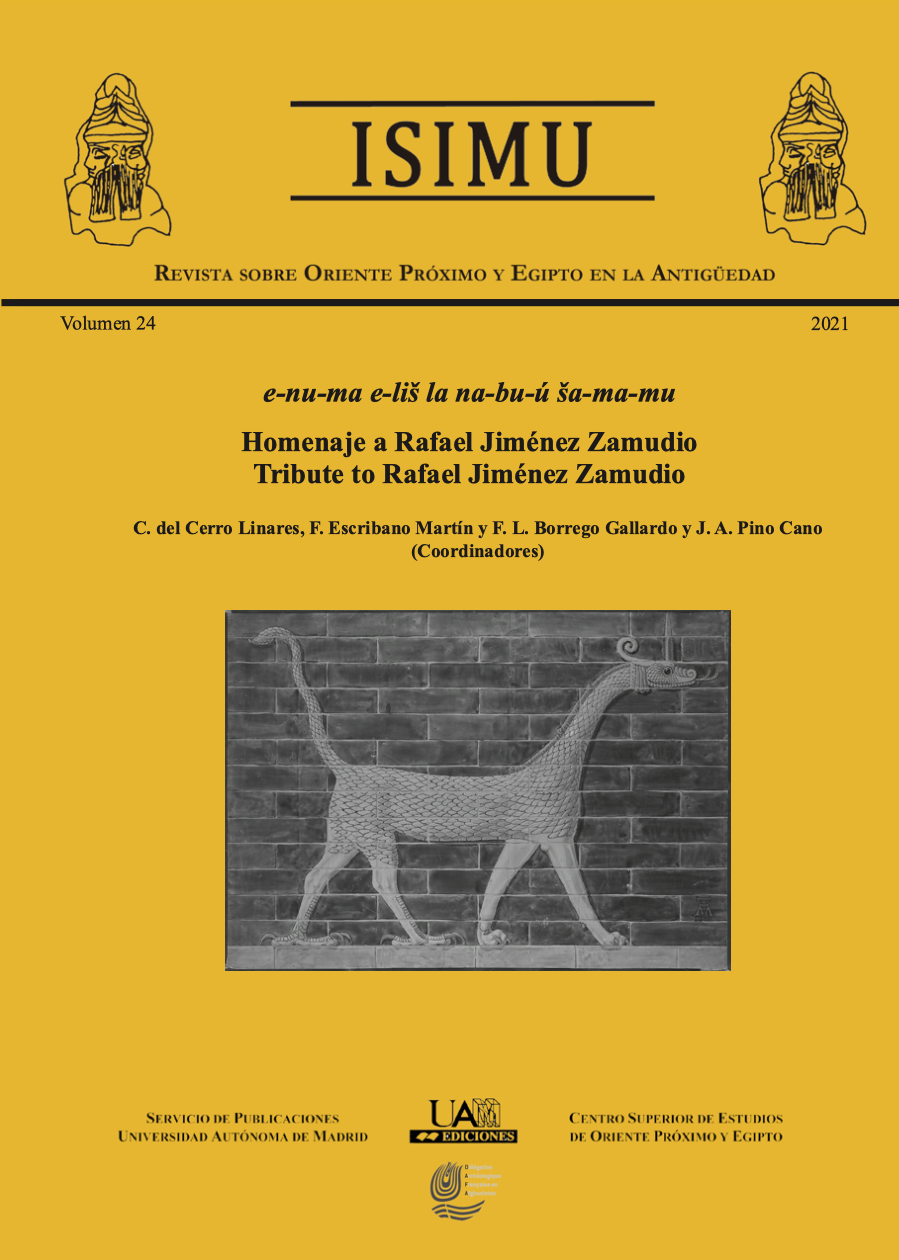
Keywords:
Eannatum, Royal Inscriptions, énsi, lugal, Lagaš, Ĝirsu, NinĝírsuCopyright (c) 2022 Juan Antonio Pino Cano, Marta Román Barrero

This work is licensed under a Creative Commons Attribution-NonCommercial 4.0 International License.
Abstract
The objective of this work is to show, from a Royal Inscription dated to the ED IIIb period, from G?irsu (modern Tello), the scope of linguistic and philological information that can be extracted from each valuable written vestige that has come down to us from the ancient Sumeria, through which the people and events that occurred in the remote times of ca. 4,500 years ago, come to life again. The study will be structured according to the following sections: 1_Space-time location; 2_Type of Inscription and function or use; 3_Transliterated text and its linear and literary translation; 4_Morphosyntactic analysis following the model of A.H. Jagersma; 5_Controversial terms; 6_The Sumerian well; 7_Deity names and personal names and their possible etymologies; 8_Identification of the cities that appear in the Inscription, the possible relationships between them and their etymology.